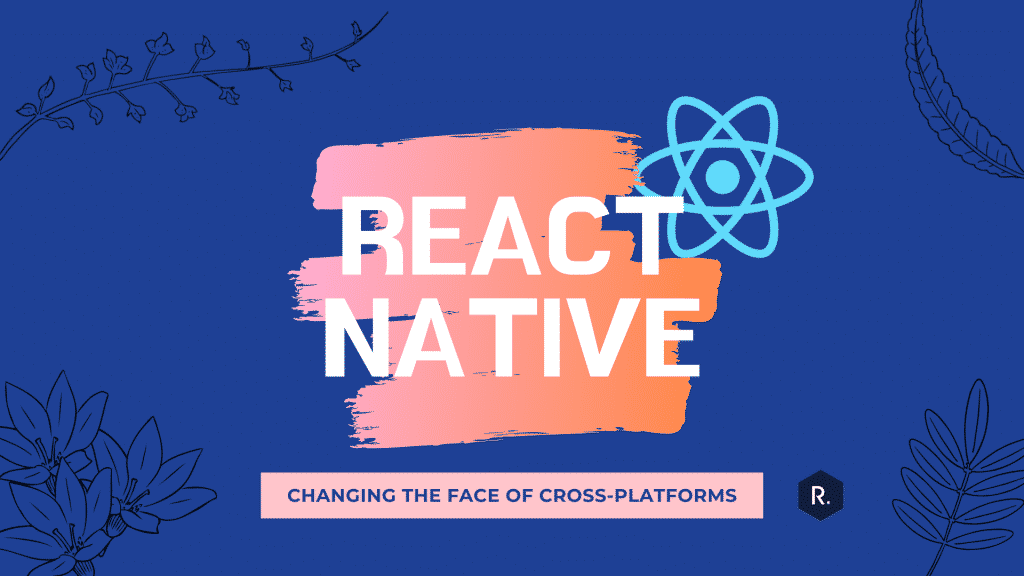Why should you be using cross-platform technology and why React Native? Why not stick with what’s already working?
Mobile Application plays an important role in most consumer and even enterprise businesses due to the significant increase in mobile adoption. In fact, in 2019, 63.4% of all Internet traffic came from mobile devices (1). Having a high-quality mobile application would certainly boost user engagement and user experience when using business’ services.
But the Mobile App game has changed and sticking with old roots can cause money, reduce efficiency, and slow down production. We’re not dissing the major OSes by any means, just because there are new cross-platform solutions in town. We’re just simply pointing out the downsides of using them and how you can overcome those disadvantages with cross-platform technologies, specifically, React Native.
The issues with iOS and android
When it comes to mobile platforms, we cannot ignore the two biggest players on the market: iOS and Android. The diversity of mobile platforms forces businesses to make a decision on how their mobile application should be developed to enter those two major OSes. Traditionally, they would hire two developer teams, each for one platform. Each team will have its own road map and development strategy to create a mobile app for their target platform to achieve maximum efficiency. This creates three major issues for business:
1. The cost of building an application is doubled since they have to fund two developer teams to build the app.
2. The consistency of the application across platforms is not guaranteed. If the development speed of the two teams is not aligned, one platform might be lagged behind in terms of features and bug fixes.
3. The cost of building an additional platform (if there is a need or a new platform emerges) will be huge because the business would need another dedicated team and a new application to manage.
The evolution of cross-platform
To solve those three major issues, the idea of cross-platform is born. What it means to be “cross-platform” is that a business would only need one development team and manage one application project. That application project will be deployed into multi-platforms, which in this example, are an iOS app and an Android app. The idea was brilliant, except that there were multiple attempts and technologies trying to bring the best cross-platform experience, but none of them really rocketed the mobile development market. Some examples and reasons might be:
1. PhoneGap/Ionic: Since the performance of the solution was so slow compared to the traditional approach that the trade-off is not worthy, the adoption is not favored.
2. Native Script: The community adoption was not good, meaning that there won’t be much support when encountering problems.
3. Xamarin: The solution is not open-source and proprietary to Microsoft, which discouraged community adoption. Furthermore, the programming language used was C# which is not the most popular.
We might wonder, what if a new cross-platform solution can combine the strengths and reduce the weaknesses of the precedent solutions? Wouldn’t that be great? Introducing React Native.
Why React native?
For many reasons, React Native is a technology that has evolved beyond what other cross-platform technologies can offer.
React Native uses Javascript.
Javascript is the most widely adopted language in the world at the current time of writing. That eases the mass adoption of the technology. The way React Native is created paves the way to achieving the best performance possible from a mobile application while allowing community contributions to make React Native even better.
Released in 2015, React Native has been growing considerably and steadily in terms of business adoption.
React vs flutter
Another success story of cross-platform technologies is Flutter, developed by Google and released to the public in 2018. Flutter took the success of React Native and improved its performance, while React Native was on its way to improving its own.
What React Native can offer better than Flutter is that React Native allows app updates without going through AppStore (iOS) and Playstore (Android) processes using plugins like CodePush and Expo Updates. This enables businesses to deliver the best user experience to users as fast as possible.
A universal cross-platform solution
Furthermore, React Native has made a further step and positioned itself as an even more universal cross-platform solution where it can be used to develop Windows software, web applications, and any other new platforms.
This has created a huge potential for a business to quickly migrate to a new platform, which helps optimize user adoption and platform independence.
Going forward, React Native will become one of the best choices when developing a mobile application and an even more solid option when developing a cross-platform one. Investing in React Native will yield a paying result for a business’s future.
Do you still prefer the major OSes like iOS and Android or have we convinced you to make the switch? If not, we’re curious to know what more would you need to come to the React Native side?
Together with our partner, we at Reactron Technologies have realized React Native’s potential in one of our cases and created a successful mobile application. Read more about our cases.
References:
(1): Internet Stats & Facts for 2019: https://hostingfacts.com/internet-facts-stats/



It exclusively your opinion